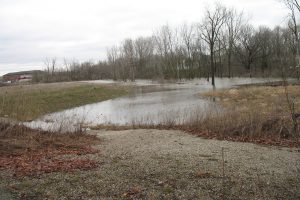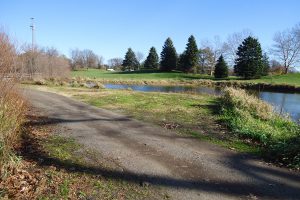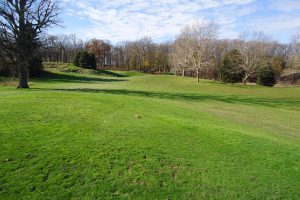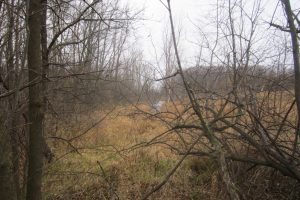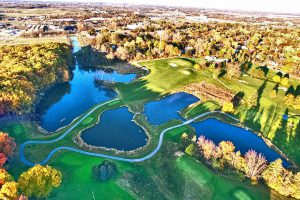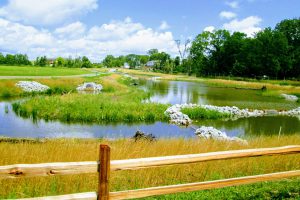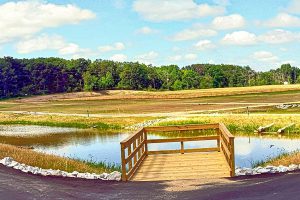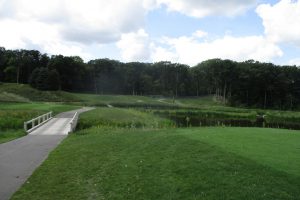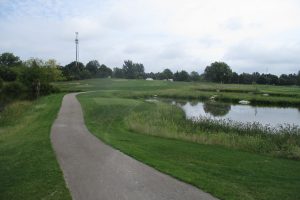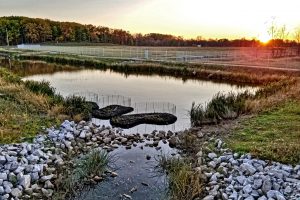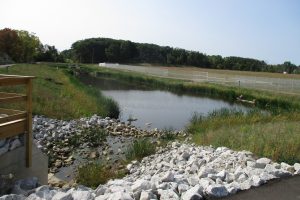Groesbeck Park Drain, Ingham County Drain Commissioner
Award:
Michigan Association of County Drain Commissioners (MACDC) 2018 Innovation & Excellence Award Winner
Project Name:
Groesbeck Park Drain
Client Name:
Patrick E. Lindemann, Ingham County Drain Commissioner
Date:
2014 – 2017
Location:
Located in portions of the City of Lansing and Lansing Township (and bordered by the City of East Lansing).
PROJECT STORY
Through innovation, persistence, and collaboration, the ICDC team transformed a 300-acre watershed, riddled with groundwater contamination and no stormwater outlet, into a regional stormwater detention facility that improves water quality and protects the region’s drinking water supply.
CHALLENGES
The project contained 11 different sites with varying types and degrees of contaminants, including solid waste landfills, industrial disposal, and leak sites, and was adjacent to a fly ash disposal pit, an EPA superfund site, and a Class II active landfill. The site contains remnants of the Mason Esker, a highly permeable area of sand and gravel that is a large groundwater recharge area. Decades of intense urban development caused flooding on properties, local streets and onto the City of Lansing’s Groesbeck Golf Course. Because there was no stormwater outlet, the flooding would push unfiltered stormwater and polluted upstream runoff into the groundwater recharge area, and ultimately into the upper portions of the aquifer that provides most of the City of Lansing’s drinking water.
ENVIRONMENTAL AND WATER QUALITY BENEFITS
Vegetation was selected to maximize the uptake of pollutants, provide for a diverse wildlife habitat and create an aesthetically pleasing ecosystem.
Instead of the stormwater collecting in low areas and infiltrating the ground and worsening the pollution plume, the treatment ponds were lined when detention was built into the system so no infiltration occurs, and stormwater only leaves the site during large rain events.
DESIGN OVERVIEW AND INNOVATIVE SOLUTIONS
Collection systems were constructed on David St., Barritt St., Wood St., Lake Lansing Rd., and Sam’s Way that ultimately discharge through a 3-phase first flush treatment system. A specialized treatment system was also designed and constructed on the Builder’s Redi-Mix property. Once through the first flush treatment ponds, the water is carried onto the Groesbeck Golf Course, largely reconstructed to accommodate nearly 7.1 acres of new treatment and detention systems. A pump recirculation system moves the stormwater through the ponds and various limestone spillways on the golf course.
USE OF NEW MATERIALS
Over 75 habitat mitigation structures were installed throughout the project. These structures, including basking rock piles for snakes and sand mounds for turtles, help to mitigate the loss of valuable habitat for insects, reptiles, amphibians, and aquatic species.
COST EFFECTIVENESS
For several years prior to bidding, the ICDC worked with local developers, the road department, the City of Lansing, the Lansing Board of Water And Light and Lansing Township to integrate construction of the drain into their projects – resulting in a 37% ($4.7M) cost savings. Value engineering was considered at every stage to offset cost increases during the four year gap between bidding and the start of construction (due to litigation).
25,000 CYD of excavation spoils from the construction of open water basins and wetlands on holes 6 and 7 were reworked into the project. These spoils were used to make the reconstruction of the golf course possible without any additional cost to the City.
Before Project
After Project

